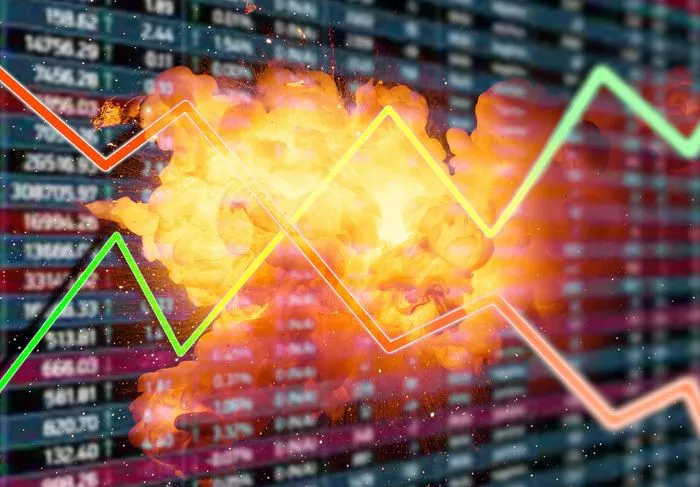Understanding how futures predict market trends is a crucial aspect of navigating the complex world of financial markets. Futures, as derivative financial instruments, hold a unique position in providing insights into potential market movements.
Introduction to Futures and Their Market Dynamics
Futures, also known as futures contracts, are standardized financial agreements that obligate the buyer to purchase, or the seller to sell, a specific asset at a predetermined future date and price. These contracts derive their value from an underlying asset, which can include commodities, financial instruments, stock indices, or interest rates. The dynamics of futures trading involve speculation on the future price movements of the underlying asset.
Price Discovery Mechanism in Futures Markets
One of the primary ways through which futures predict market trends is via the price discovery mechanism. The futures market acts as a platform for participants to express their expectations and predictions regarding the future value of an asset. As traders and investors assess economic indicators, geopolitical events, and supply-demand dynamics, their collective actions in the futures market contribute to the establishment of prices that reflect anticipated future conditions.
Leveraging Futures for Hedging Purposes
Futures play a pivotal role in risk management strategies, allowing market participants to hedge against potential adverse price movements. Hedgers, including producers, consumers, and investors, use futures contracts to mitigate the impact of volatility in the prices of the underlying assets. The hedging activity in futures markets can signal expectations about future market conditions, providing valuable insights into broader market sentiment.
Examining Contango and Backwardation as Market Indicators
Contango and backwardation, two terms intrinsic to futures markets, offer significant clues about market expectations. Contango occurs when futures prices are higher than the spot prices of the underlying assets. This situation often indicates an anticipation of future price increases. Conversely, backwardation arises when futures prices are lower than spot prices, suggesting expectations of a future decline. Monitoring the prevalence of contango or backwardation can provide traders with insights into the market’s collective predictions.
Futures as Leading Indicators of Economic Trends
Futures markets are considered leading indicators that can foreshadow broader economic trends. For instance, commodities futures, such as those for crude oil or agricultural products, are closely watched to gauge expectations about global economic growth. An increase in demand for commodities futures may indicate optimism about economic expansion, while a decline could signal concerns about a slowdown. As such, futures markets are integral to the process of economic forecasting.
The Impact of Speculation on Futures Markets
Speculation, driven by the pursuit of profit, is a fundamental aspect of futures trading. Traders engage in speculative activities based on their assessments of future market conditions. The aggregated positions of speculative traders in futures markets reflect their collective expectations. Monitoring the positioning of speculators, often categorized as either long or short, can provide valuable insights into the prevailing market sentiment and potential directional movements.
Analyzing Open Interest and Trading Volumes
Open interest, representing the total number of outstanding futures contracts, and trading volumes are essential metrics in futures market analysis. Increases in open interest accompanied by rising trading volumes may indicate a strengthening trend, reflecting heightened market participation. Conversely, declining open interest and decreasing volumes might signal a potential reversal or loss of interest. Traders often use these metrics to confirm the strength of prevailing trends or identify potential trend reversals.
Futures Markets and Global Economic Indicators
The interconnectedness of global financial markets means that futures can act as indicators not only for specific asset classes but also for broader economic conditions. For example, interest rate futures, such as those linked to government bonds, are closely monitored for signals about monetary policy expectations. Changes in interest rate futures can offer insights into expectations regarding inflation, economic growth, and central bank actions.
Market Sentiment Reflected in Futures Prices
Futures prices are not solely driven by fundamental factors; they are also influenced by market sentiment. Traders and investors incorporate a wide range of information, including news, geopolitical developments, and economic reports, into their decision-making processes. As this information is processed and translated into trading activity in futures markets, it contributes to the formation of prices that reflect the collective sentiment of market participants.
Role of Futures in Trend Following and Reversal Strategies
Traders often use futures contracts in trend-following and trend-reversal strategies. Trend-following strategies involve identifying and participating in existing market trends, with futures acting as vehicles for expressing bullish or bearish views. Conversely, trend-reversal strategies aim to capitalize on potential shifts in market direction. By monitoring key technical indicators and chart patterns in futures markets, traders seek signals for trend reversals or continuations.
Futures and Global Macro Analysis
Global macro analysis involves evaluating and trading financial instruments on a macroeconomic scale. Futures contracts, spanning various asset classes and markets, are integral to this analysis. Traders and hedge funds engaged in global macro strategies rely on futures to express views on interest rates, currencies, commodities, and equity indices. The positioning and activities of these participants in futures markets contribute to the broader narrative of global macroeconomic trends.
Conclusion
In conclusion, the predictive power of futures in financial markets is multifaceted, encompassing aspects of price discovery, risk management, economic forecasting, and market sentiment analysis. As participants engage in trading activities, expressing their expectations and managing risk through futures contracts, these markets become dynamic arenas that reflect the collective wisdom and anticipations of the investing community. Traders and investors can enhance their decision-making processes by incorporating insights gleaned from futures markets into their overall market analysis toolkit, allowing them to navigate the complexities of today’s interconnected global financial landscape.


